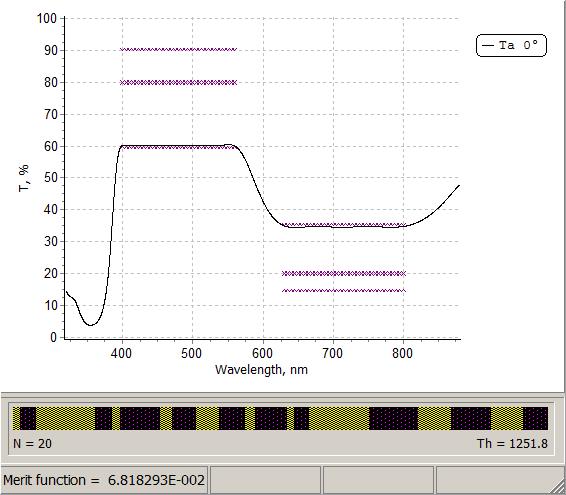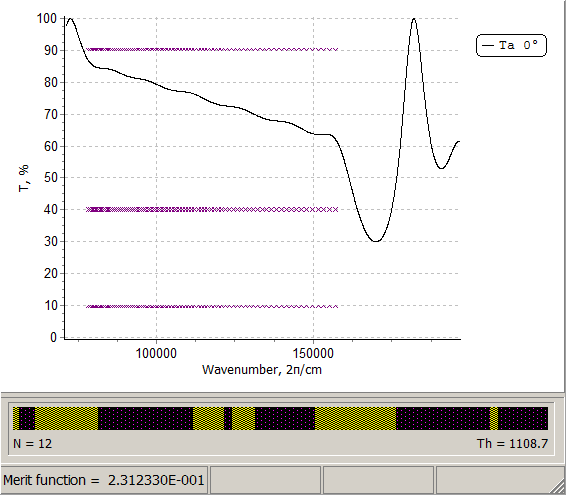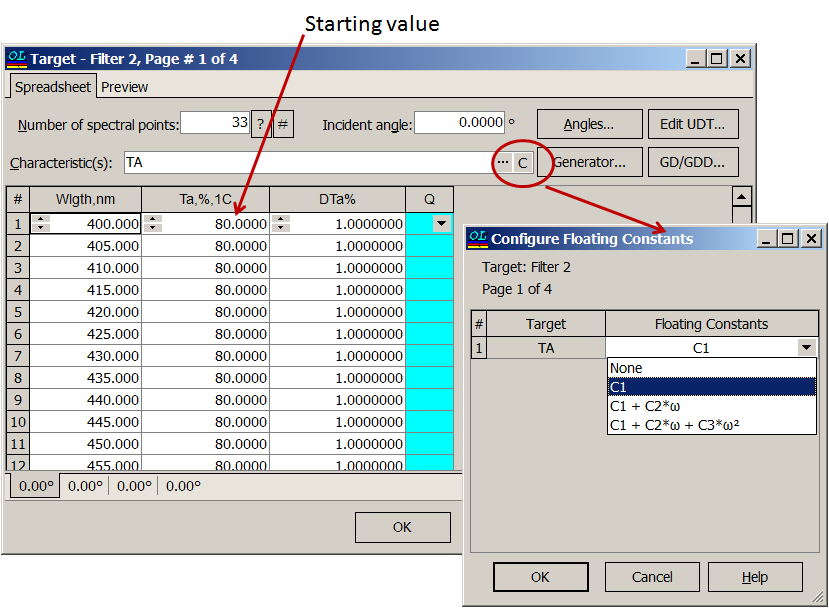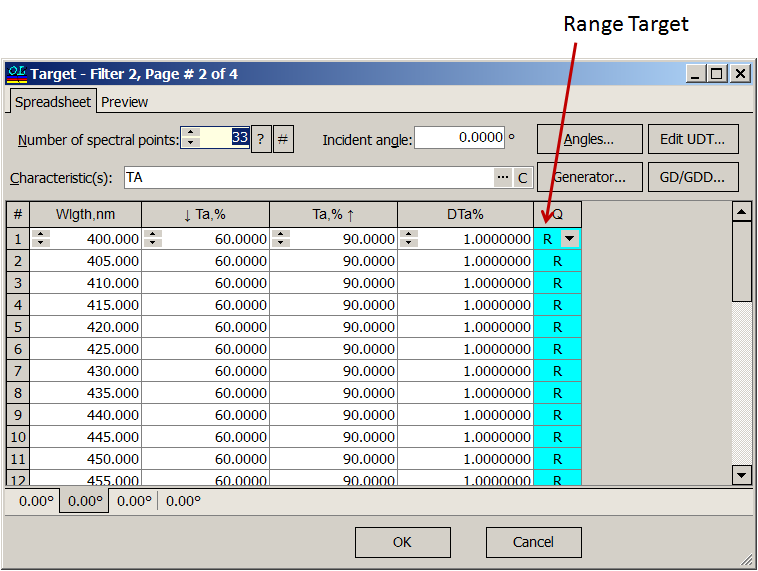| A new big addition to OptiLayer design capabilities: supporting floating constants for all targets.
It is possible to specify only constant offset, or more complicated offsets depending on frequency: \(C_1+C_2\cdot\omega\) or \(C_1+C_2\cdot\omega+C_3\cdot\omega^2\). These new options are important for designing of ultrafast coatings in the case when a constant/linear/parabolic GD/GDD are required. The option is useful also in general case, when, for example, it is necessary to design a coating with constant T/R in some spectral region, and the absolute value of this characteristic is not important. Example (right panel): target transmittance is to be flat in the spectral range in the visible spectral range; transmittance must be in the corridor from 60% to 90% and from 15% to 35% in the spectral ranges from 400 to 570 nm and from 630 to 800 nm, respectively. |
 |
 |
There are three types of floating constants:
|
| Target specification: you should specify two pages for each desired spectral range. In the first page you should indicate a floating constant type: | In the second page you specify the allowed limits of the spectral characteristics using range targets: |
 |
 |
OptiLayer provides user-friendly interface and a variety of examples allowing even a beginner to effectively start to design and characterize optical coatings. Read more…
Comprehensive manual in PDF format and e-mail support help you at each step of your work with OptiLayer.
If you are already an experienced user, OptiLayer gives your almost unlimited opportunities in solving all problems arising in design-production chain. Visit our publications page.
Look our video examples at YouTube
OptiLayer videos are available here:
Overview of Design/Analysis options of OptiLayer and overview of Characterization/Reverse Engineering options.
The videos were presented at the joint Agilent/OptiLayer webinar.
